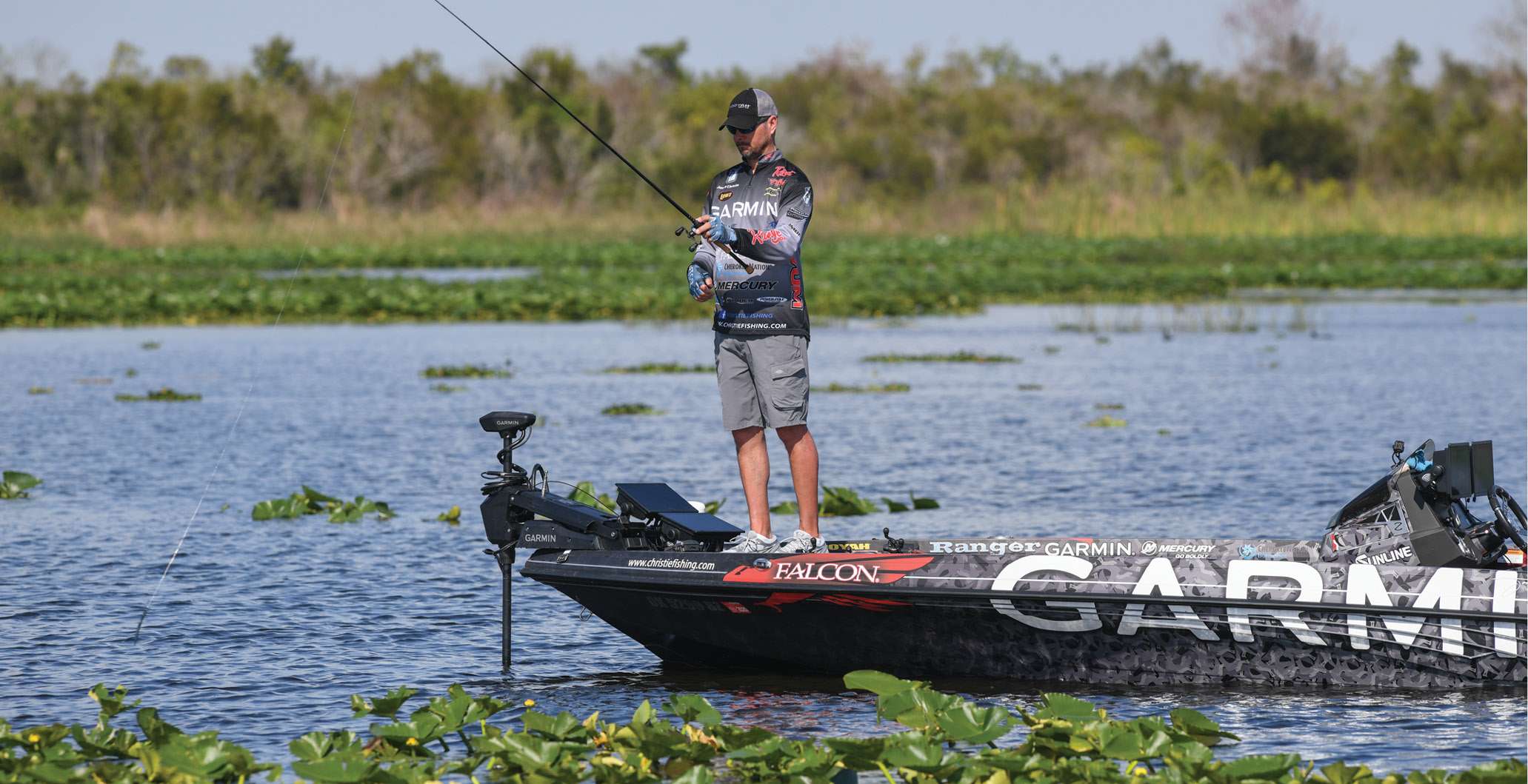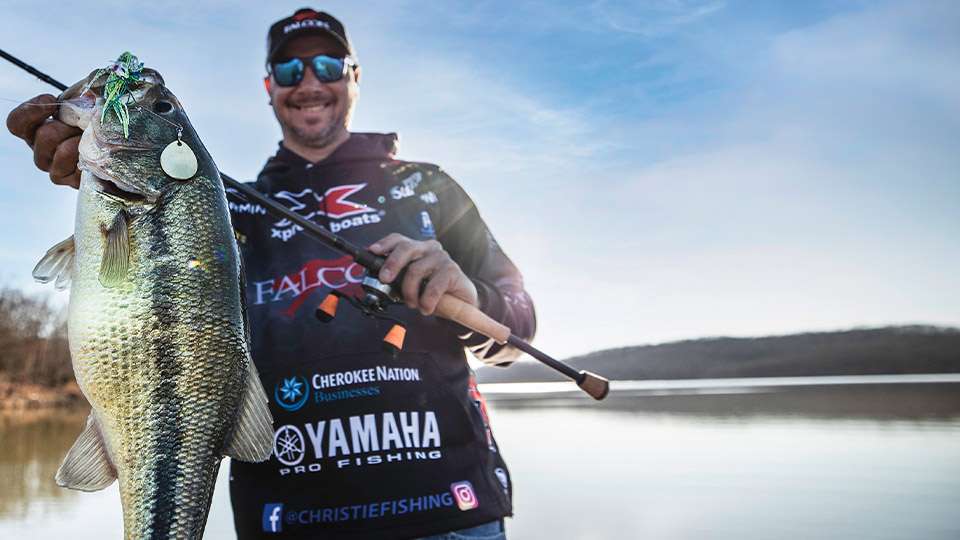
It’s a cool but clear March day on Lake Tenkiller, and Jason Christie is sitting in his boat tying on lures for a day he wants to spend chasing spawning bass. He’s already put a 1/2-ounce spinnerbait on one rod, a Christie Critter on his flipping stick, a shaky head worm on a third rod and a Rogue on still another. Clearly, he’s not going sight fishing with a mixed arsenal like that.
“There are a lot of different ways to catch spawning bass if you don’t want to look for them specifically on beds, or if you can’t actually see them,” he explains. “Here on Tenkiller where I live, I know I won’t see any fish on beds today because of the water clarity and water temperature, but I’ll still catch them with one of these lures.
“Every lake is different, but at the same time, nearly every lake is similar. Bass usually spawn first on the upper end of a lake because the water warms faster there. If that water is dingy and off-colored, as it often is, the first fish that move in will spawn very shallow near the bank, because their eggs need sunlight. Later, when the water is clearer and also warmer on the lower end at Tenkiller, they spawn in 3, 4, 5 and even 6 feet of water.”
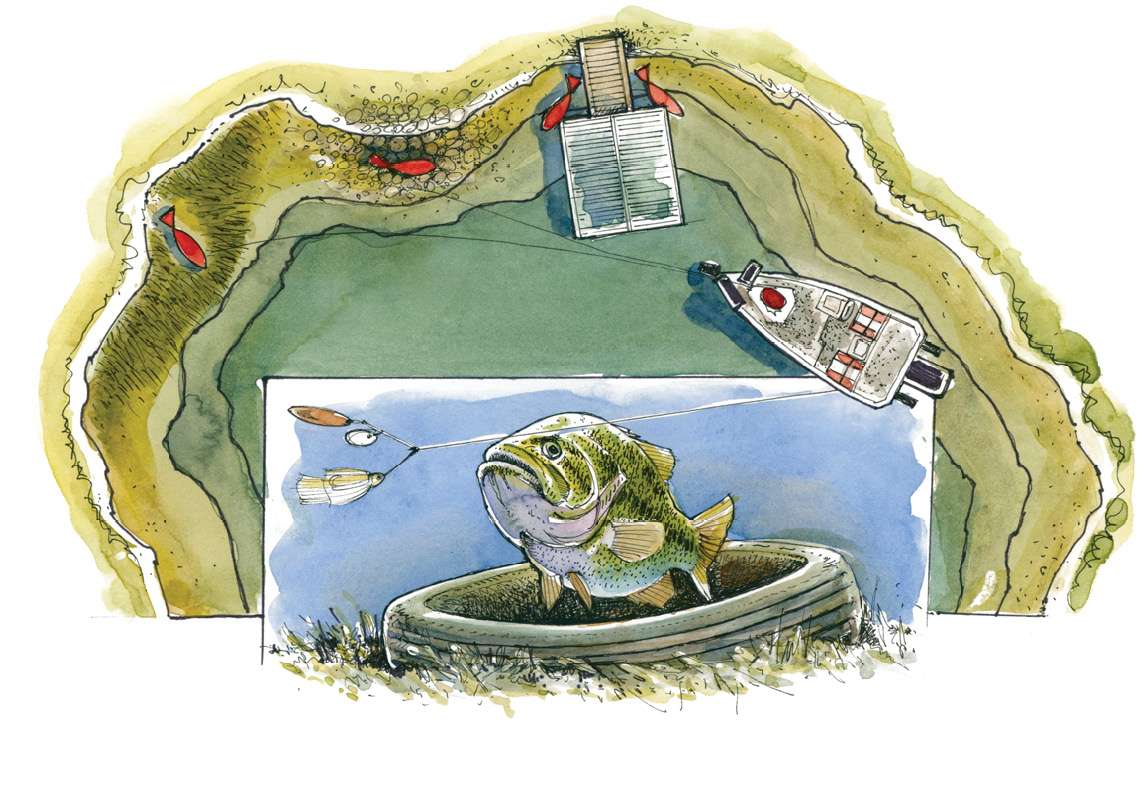
Coming from an Elite Series pro of Christie’s experience, these seem like routine, secondary considerations, but for others, these two factors — water temperature and water clarity — should be foremost in their minds this time of year, especially if they’re not planning to sight fish. Water temperature, of course, has long been a primary consideration in that when the water reaches a certain temperature, it triggers bass movement into the shallows, but temperature and clarity together can determine where and how deep the fish build their nests.
“The first group of bass that come in tend to spawn shallower,” emphasizes Christie, “because the warmest water will only be in the first foot or so of the water column. We’re talking 58 to 60 degrees, or cooler, depending on the area of the country you’re fishing. If the winter has been really cold, bass may start spawning sooner, in 52- or 54-degree water. I’ve experienced that many times.
“This is when I’m using that 1/2-ounce Booyah spinnerbait, moving down the shoreline and casting well ahead of the boat. With a spinnerbait, I can cover a lot of water and work different depths. I’m concentrating on flat, protected coves where the fish are actually spawning but I can’t see them. If I know those bass are getting a lot of fishing pressure, I’ll usually start flipping that Christie Critter to any available cover I can find. This is a creature bait I designed to imitate a small lizard that I can move very slowly and stop right beside a rock or stump.”
Early spawning fish frequently use very predictable locations, notes the Oklahoma pro, and often the same places year after year. These can include shallow, flat coves and shorelines in major tributaries and even smaller creeks — places on the upper end of a reservoir that may only have a few inches of visibility but do have the first warm water in the lake. Some of the first places Christie tries are boat docks and the walkways leading over the water to them, big boulders, stumps and logs — anything a bass can get close to. The presence of cover is as critical in this early spawn as it is later in the season when bass are spawning slightly deeper.
“My feeling is the bass realize it’s easier to guard three sides than four,” says Christie, “so they’re going to locate against some type of object if it’s available. I’ve seen bass spawn on ladders in the water, in discarded tires and certainly in openings in vegetation. These are all things to look for when you first pull into a potential spawning area.”
About a month after the first spawn occurs, a second wave of fish comes in, often on the next full moon. Stragglers will arrive between the big moons, but larger numbers move shallow as the moon waxes. It can be quick, too. Christie has a logbook full of experiences in which he has fished on a Friday, for instance, and hardly seen any bass at all but returned to the same area the following morning and literally found fish everywhere. By this time, water temperature will usually have increased a few degrees, which means bass are able to spawn deeper, particularly on the lower end of a lake in clearer water. The clearer the water, the deeper sunlight can penetrate to warm the water column.
“My theory is that fish want four or five things for spawning — things like a certain water temperature, a certain moon phase, water clarity for sunlight penetration and a stable water level,” continues Christie. “They don’t have to have everything lined up at the same exact time, but if they have several of these conditions, they will move in.
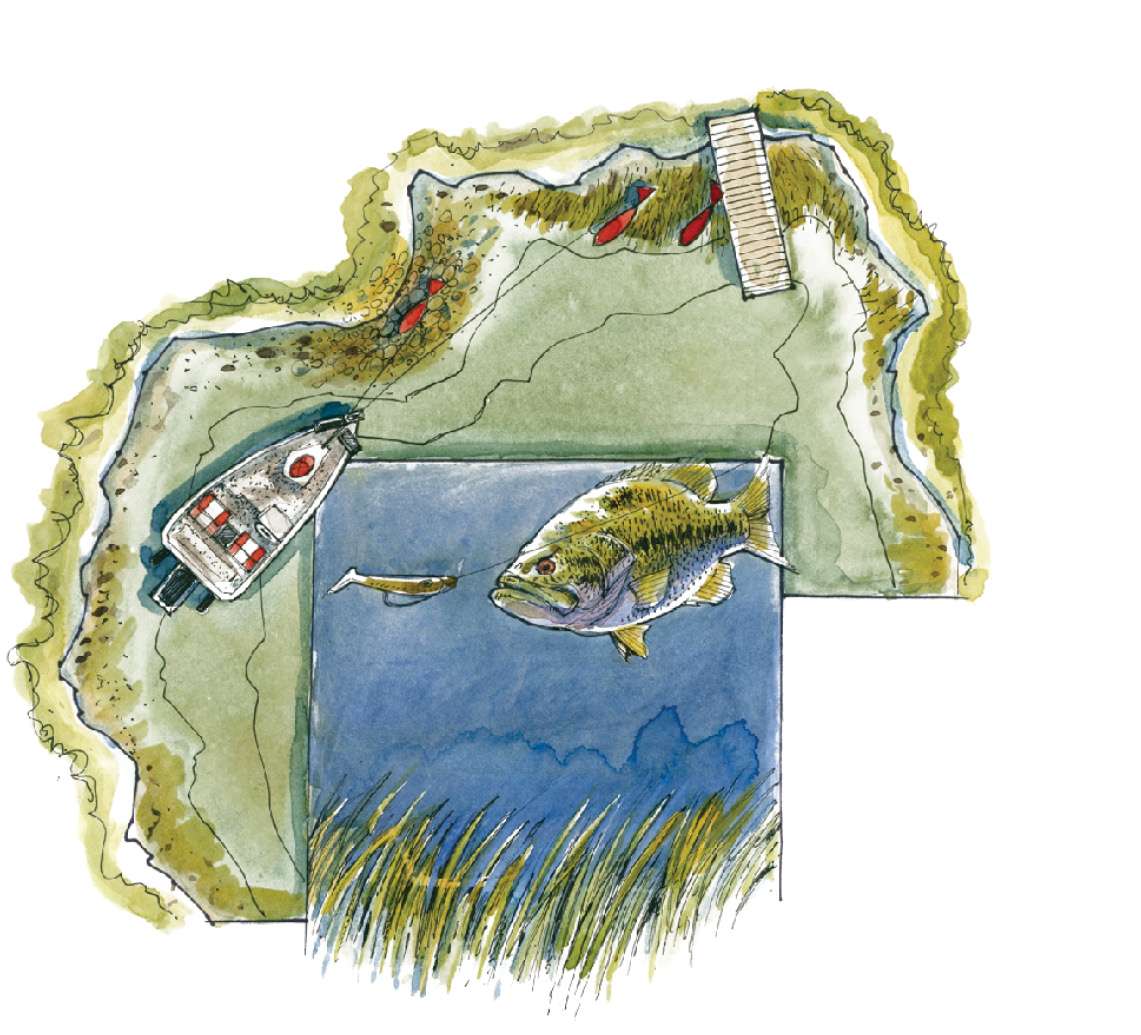
“In this deeper, clearer water, it’s hard to get a spawning fish to hit a spinnerbait, so if the fish are aggressive, I like to use a small swimbait and just reel it back on long casts. Again, I can make long casts and fish different depths with a lure like this, until I determine how deep they’re spawning.
“If they’re not aggressive, I’ll usually start fishing a shaky head rigged with a 5-inch worm and a 1/4-ounce head because I like to maintain bottom contact. And, just like in the shallow, dingy water, I’m going to look for big rocks, dock walkways or some other type of cover, even something like a protected, deeper cove filled with standing timber. As the spawn progresses, always keep in mind that some places like this not only will have a population of resident fish, but that they can sometimes also provide the ideal situation of prespawn, spawning and postspawn bass, and they’ll all hit the same lure.”
If he locates a cove like this, which are certainly present on many lakes from Table Rock to Sam Rayburn — abundant cover with deeper water leading to a shallower bank — Christie will usually fish a jerkbait. He will fish a soft, weightless jerkbait on sunny days with calm water, and a hard jerkbait like a Rogue under dark skies and wind. In either case, he can cast shallow and work deeper while varying his retrieve speed. Jerkbaits will bring strikes from largemouth as well as smallmouth, if they’re present, and are one of several lures that seem to attract strikes from slightly larger fish.
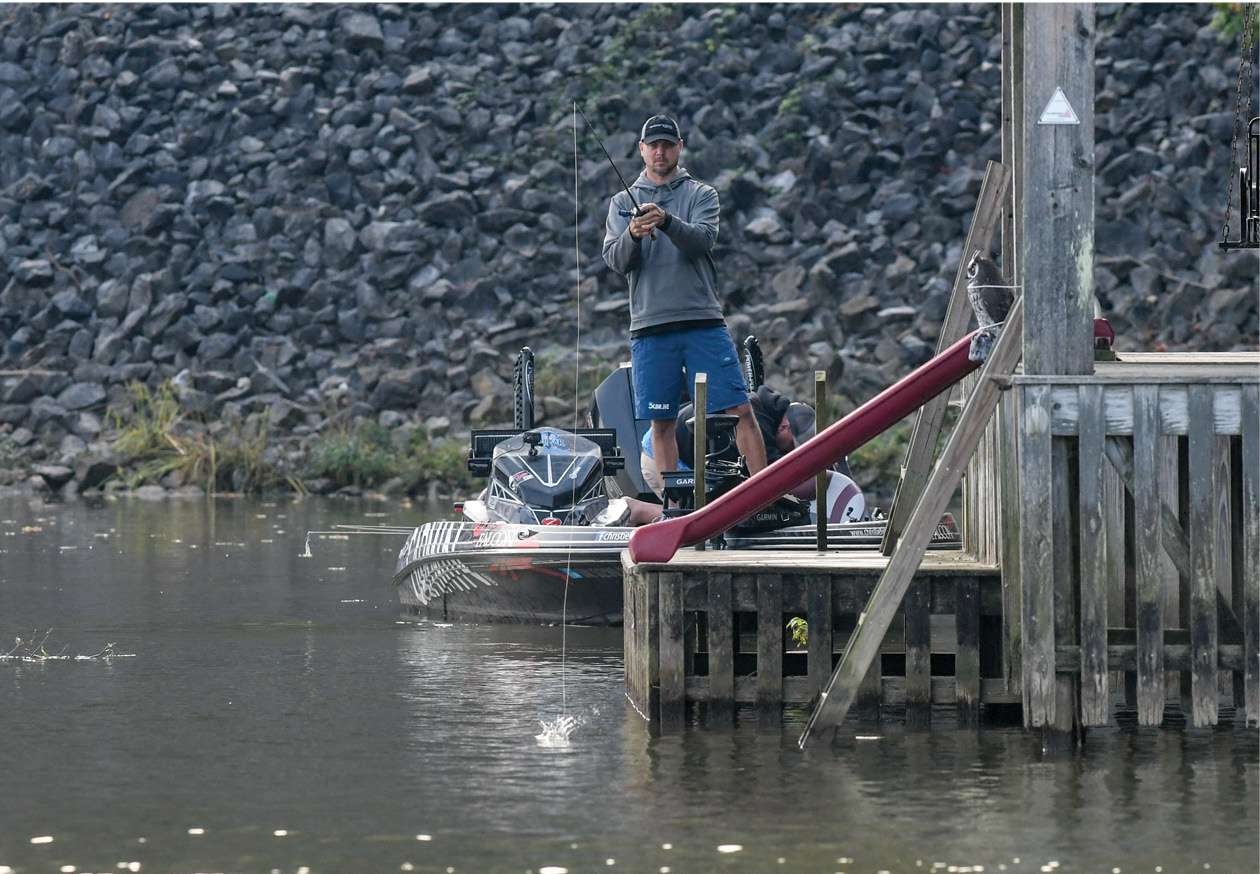
“The second full moon of the spawn is really my favorite,” he goes on, “because in the warmer water, the bass are more scattered and a little deeper. They will even spawn on the main lake. This is what makes a jerkbait such a good lure choice. They’re so versatile in how you can work them. I think Patrick Walters’ 104-pound catch in winning the Elite tournament on Lake Fork last fall really showed us what jerkbaits can do, particularly in standing timber, and even though it wasn’t a spawning bite.”
“He fished jerkbaits all during the 2020 Elite season and caught bass wherever he went.”
Christie has also caught spawning bass in tidal waters, and in these conditions, water depth is probably the most important consideration for both bass and bass anglers. The fish have to have enough water at low tide to cover their eggs, but even then they’re not always visible to fishermen. Once again, casting to cover becomes an important strategy, almost to the extent it might be termed spring junk fishing.
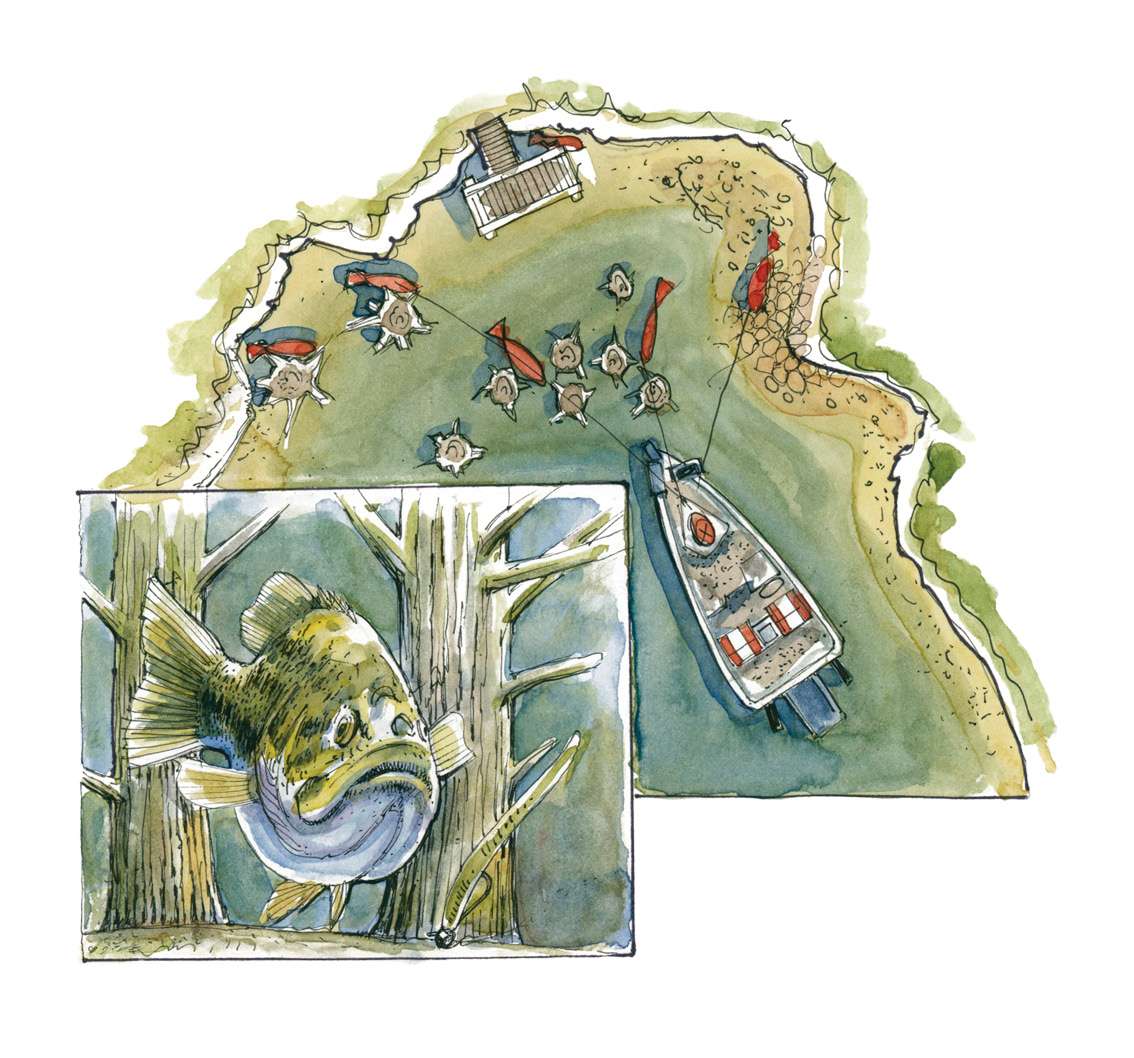
On the James River, for example, where running the tides is an everyday fishing tactic, spring fishing for spawning bass is often about casting to duck blinds and standing timber, and an angler can go all day without seeing a spawning bed. This is when the shaky head and even a Texas rig can be used.
“The majority of the time, bass want to be in a protected area,” explains Christie, “but this isn’t always true on the second wave of incoming bass. I have found them in simple current breaks and behind rocks, but this isn’t the norm in tidal water. I think cover takes on added importance in tidal water, because tides are currents that flow in both directions and change the water depth each time. Whenever I’m fishing a tidal river for spawning bass, I look for cover in protected areas, especially in the tributaries. Remember, also, that tidal water is nearly always moving water; it’s only at slack tide for a very short period of time, and bass instinctively know that. When they’re ready to spawn, they want their eggs to survive.”
As Christie has shown, there are numerous alternatives to sight fishing for spawning bass throughout the entire spring season. Regardless of the type of lake, bass will be paying attention to water temperature and water clarity, and bass fishermen should pay attention to them, as well. These two factors, especially, can and often do determine where and how deep bass spawn, which in turn determines how anglers can catch them.
That’s why Christie was sitting in his boat early that March morning on Tenkiller, tying four different lures on his rods.
Originally appeared in Bassmaster Magazine 2021.
